
“Discover the Thrill: Sri Lanka’s Safari Wonders”
Sri Lanka stands as a captivating jewel in the crown of safari destinations, offering a tapestry of natural wonders and wildlife encounters that rival the best in the world. Nestled within its verdant landscapes are national parks and reserves teeming with an astonishing array of fauna and flora, beckoning travelers to embark on exhilarating safari adventures.
One of Sri Lanka’s most compelling draws is its remarkable diversity of wildlife. Within its compact borders, adventurers can encounter majestic elephants, elusive leopards, lumbering sloth bears, graceful deer, formidable buffalo, and sunbathing crocodiles, among a plethora of other fascinating species. What sets Sri Lanka apart is its status as a biodiversity hotspot, with numerous endemic species found nowhere else on the planet, adding an extra layer of allure to its safari experiences.
Accessibility is another hallmark of Sri Lanka’s safari appeal. Many of its national parks and wildlife reserves are conveniently situated within a few hours’ drive from major cities and tourist hubs, ensuring that wildlife encounters are within easy reach of travelers. Whether embarking on a day trip or an extended safari expedition, adventurers can seamlessly integrate these experiences into their Sri Lankan itinerary.
Sri Lanka’s favorable climate further enhances its safari allure, offering year-round opportunities for wildlife viewing. While certain seasons may showcase specific wildlife behaviors or species, the country’s temperate climate ensures that safari adventures are possible at any time of the year. From the lush greenery of the wet season to the golden hues of the dry season, each season brings its own charm and wildlife spectacle.
But it’s not just the wildlife that captivates travelers; Sri Lanka’s breathtaking scenery serves as a captivating backdrop to safari adventures. From the mist-shrouded rainforests and dense jungles to the sweeping savannas and tranquil lakes, the country’s natural landscapes provide a stunning canvas for unforgettable wildlife encounters. Every safari excursion becomes a journey through a living postcard, where every turn reveals a new vista of pristine wilderness and untamed beauty.
Moreover, Sri Lanka’s safari experiences offer more than just wildlife sightings; they provide a gateway to the country’s rich cultural and historical heritage. Many safari destinations are located in close proximity to ancient ruins, sacred temples, and traditional villages, allowing travelers to immerse themselves in the country’s vibrant tapestry of culture and history. This fusion of wildlife and culture adds depth and dimension to the safari experience, creating memories that linger long after the journey ends.
Finally, Sri Lanka’s commitment to ethical and sustainable tourism practices ensures that safari adventures are not only thrilling but also responsible. Many safari operators and accommodations prioritize conservation efforts, responsible wildlife viewing, and community engagement, ensuring that travelers can enjoy their safari experiences while contributing to the preservation of Sri Lanka’s natural treasures.
In essence, Sri Lanka is a sanctuary for safari enthusiasts, offering a symphony of wildlife, scenery, culture, and sustainability that elevates the safari experience to new heights. Whether exploring by jeep, on foot, or by boat, adventurers are invited to embark on a journey of discovery through the enchanting wilderness of this tropical paradise.
Sri Lanka is renowned for its stunning biodiversity and rich natural heritage, which is beautifully encapsulated in its national parks. These protected areas serve as sanctuaries for a wide array of flora and fauna, offering visitors a glimpse into the island’s remarkable natural wonders. Here’s a rundown of some of the notable national parks in Sri Lanka
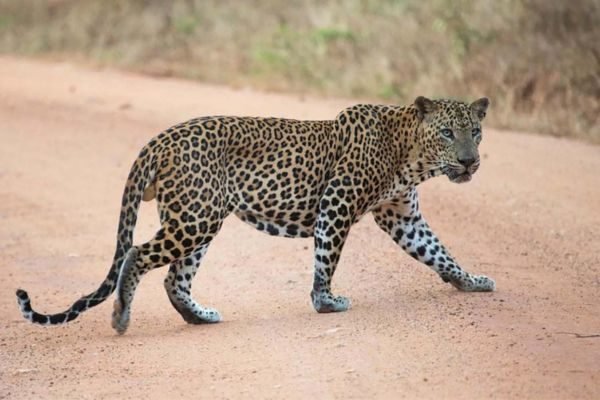
Yala National Park
Size and Location:
- Yala National Park covers an extensive area of approximately 979 square kilometers, making it the second-largest national park in Sri Lanka.
- Situated in the Hambantota district of the Southern Province, Yala spans across a diverse range of ecosystems, including dry monsoon forests, grasslands, scrub jungles, and coastal lagoons.
Wildlife:
-
- Yala is celebrated for its rich biodiversity and is home to a wide array of wildlife species, including the highest density of leopards in the world. The park’s leopard population is one of its major attractions, offering visitors a rare opportunity to spot these elusive big cats in their natural habitat.
- In addition to leopards, Yala is inhabited by other iconic mammals such as elephants, sloth bears, water buffaloes, sambar deer, spotted deer, and wild boars.
- The park is also a haven for birdwatchers, with over 200 avian species recorded, including the endemic Sri Lanka junglefowl, painted stork, crested serpent eagle, and black-capped bulbul.
Safari Experience:
-
- Yala National Park offers visitors the chance to embark on thrilling jeep safaris, providing opportunities for wildlife sightings and photographic opportunities.
- The park is divided into five blocks, with Block 1 being the most visited and popular among tourists due to its higher leopard density. However, other blocks such as Block 5 also offer unique wildlife experiences and fewer crowds.
- Safari tours are typically conducted in the early morning or late afternoon when wildlife activity is at its peak. Knowledgeable safari guides accompany visitors, enhancing the experience with their expertise and insights into the park’s ecology and wildlife behavior.
Landscape and Scenery:
-
- Yala’s diverse landscape features a mix of dense forests, open grasslands, rocky outcrops, and coastal stretches, providing a stunning backdrop for safari adventures.
- The park’s picturesque scenery includes scenic vistas, serene water bodies, and natural landmarks such as Sithulpawwa Rock Temple and Yoda Wewa reservoir.
Conservation Efforts:
-
- Yala National Park plays a crucial role in the conservation of Sri Lanka’s natural heritage, serving as a protected sanctuary for its diverse flora and fauna.
- Conservation initiatives within the park aim to preserve and protect its fragile ecosystems, combat poaching and illegal wildlife trade, and promote sustainable tourism practices to minimize human impact on the environment.
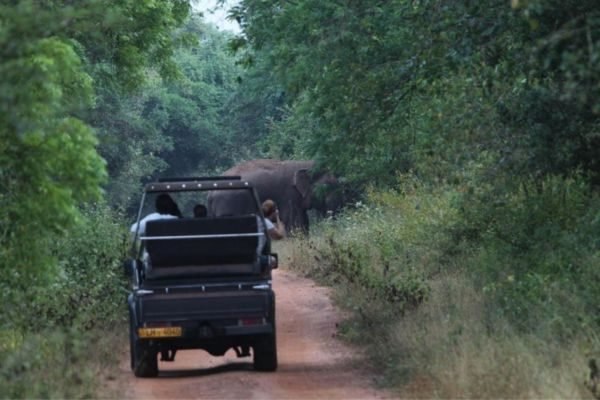
Wilpattu National Park
Size and Location:
-
- Covering an expansive area of approximately 1,317 square kilometers, Wilpattu National Park is renowned for its vast wilderness and pristine natural beauty.
- Located in the Northwest Province, Wilpattu is bordered by the Puttalam district to the south and the Mannar district to the west, with the park extending inland towards the Anuradhapura district.
Wildlife:
-
- Wilpattu National Park is celebrated for its diverse array of wildlife, including a thriving population of Sri Lankan leopards. The park is considered one of the best places in the country to spot these elusive big cats in their natural habitat.
- In addition to leopards, Wilpattu is home to other iconic mammal species such as Sri Lankan elephants, sloth bears, spotted deer, sambar deer, water buffaloes, and mugger crocodiles.
- The park’s varied habitats, including dense forests, scrublands, grasslands, and coastal dunes, support a rich biodiversity, with over 30 species of mammals, numerous reptiles, and a diverse avian population.
Scenic Landscapes:
-
- Wilpattu National Park is characterized by its picturesque landscapes, featuring dense foliage, serene lakes (villus), and ancient ruins scattered throughout the wilderness.
- The park’s numerous natural lakes serve as vital watering holes for wildlife and provide stunning backdrops for wildlife sightings and photography.
- Visitors to Wilpattu can explore its diverse ecosystems, from dense forests and open grasslands to mangrove swamps and coastal dunes, offering a unique safari experience amidst varied scenery.
Safari Experience:
-
- Safari tours in Wilpattu National Park offer visitors the opportunity to explore its wilderness and observe wildlife in their natural habitat.
- Guided jeep safaris are the most common way to explore the park, with experienced drivers and knowledgeable guides leading visitors on immersive wildlife experiences.
- Safari tours typically take place in the early morning or late afternoon, when wildlife activity is at its peak. Visitors can expect thrilling encounters with leopards, elephants, and a host of other wildlife species during their safari adventures.
Conservation and Preservation:
-
- Wilpattu National Park plays a crucial role in the conservation of Sri Lanka’s natural heritage, serving as a protected sanctuary for its diverse flora and fauna.
- Conservation efforts within the park focus on habitat preservation, wildlife protection, and community engagement to promote sustainable tourism practices and minimize human impact on the environment.
- The park also encompasses significant cultural and archaeological sites, including ancient ruins and Buddhist temples, adding to its cultural and historical significance.
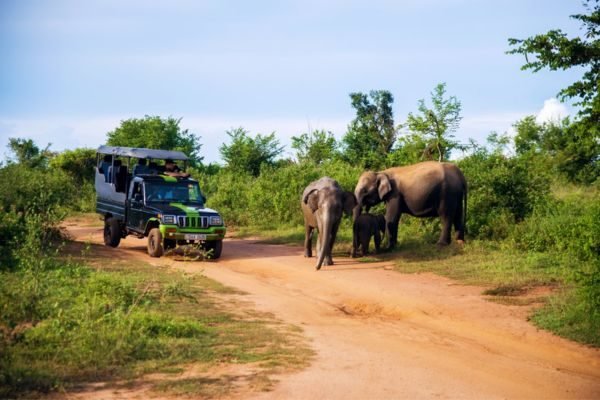
Udawalawe National Park
Size and Location:
-
- Covering an area of approximately 30,821 hectares, Udawalawe National Park is situated in the Sabaragamuwa and Uva provinces of Sri Lanka.
- The park is nestled between the districts of Monaragala and Ratnapura, making it easily accessible from major cities such as Colombo, Galle, and Kandy.
Wildlife:
-
- Udawalawe is best known for its large population of Sri Lankan elephants, which roam freely within the park’s boundaries. Visitors have excellent opportunities to observe these majestic creatures in their natural habitat.
- In addition to elephants, Udawalawe is home to a diverse array of wildlife, including sambar deer, water buffalo, wild boar, spotted deer, and Sri Lankan leopard, although the latter is less frequently spotted.
- The park’s rich birdlife is another highlight, with over 200 species of birds recorded, including endemic species such as the Sri Lankan junglefowl, Sri Lanka grey hornbill, and red-faced malkoha.
Scenic Landscapes:
-
- Udawalawe National Park boasts a variety of landscapes, including open grasslands, scrublands, marshes, and dense forests, providing diverse habitats for its wildlife inhabitants.
- The park is dominated by the picturesque Udawalawe Reservoir, which serves as a vital water source for wildlife and offers stunning panoramic views.
- Visitors can explore the park’s scenic beauty and diverse ecosystems through guided jeep safaris, nature walks, and birdwatching excursions, providing opportunities for immersive wildlife experiences and photography.
Safari Experience:
-
- Safari tours in Udawalawe National Park are a popular activity for visitors, offering the chance to witness elephants, leopards, and other wildlife in their natural habitat.
- Guided jeep safaris are the most common way to explore the park, with experienced drivers and knowledgeable guides leading visitors on exciting wildlife encounters.
- Safari tours typically take place in the early morning or late afternoon, when wildlife activity is at its peak, providing optimal viewing opportunities for visitors.
Conservation and Preservation:
-
- Udawalawe National Park plays a vital role in the conservation of Sri Lanka’s wildlife and ecosystems, serving as a protected sanctuary for its diverse flora and fauna.
- Conservation efforts within the park focus on habitat preservation, wildlife protection, and community engagement to promote sustainable tourism practices and minimize human-wildlife conflict.
- The park also supports research and monitoring programs to study and conserve its wildlife populations, contributing to the overall conservation efforts in Sri Lanka.

Minneriya National Park
Size and Location:
-
-
- Covering an area of approximately 8,890 hectares, Minneriya National Park is situated in the dry zone of Sri Lanka, near the town of Habarana.
- The park is part of the larger Minneriya-Girithale Sanctuary, which includes the nearby Kaudulla and Girithale reservoirs, providing crucial water sources for wildlife during the dry season.
-
Wildlife:
-
-
- Minneriya National Park is best known for its large population of Asian elephants, which congregate in large numbers around the Minneriya Tank during the dry season (June to September).
- Apart from elephants, the park is home to a variety of other wildlife, including sambar deer, spotted deer, water buffalo, sloth bears, leopards, and a diverse range of bird species.
- The park’s rich biodiversity and varied habitats, including grasslands, scrublands, and wetlands, support a thriving ecosystem and provide excellent opportunities for wildlife viewing and photography.
-
The Gathering of Elephants:
-
-
- The highlight of Minneriya National Park is the famous gathering of Asian elephants, which occurs annually during the dry season.
- As water sources elsewhere dry up, hundreds of elephants migrate to the Minneriya Tank in search of water and food, creating one of the largest elephant gatherings in the world.
- Visitors can witness this spectacular natural phenomenon from designated observation points within the park, offering unique opportunities to observe elephants in their natural habitat and witness their social behavior and interactions.
-
Scenic Landscapes:
-
-
- Minneriya National Park is characterized by its picturesque landscapes, including expansive grasslands, dense forests, and the scenic backdrop of the Minneriya Tank.
- The park’s diverse habitats provide a range of ecosystems for wildlife to thrive, creating a captivating environment for visitors to explore and appreciate the natural beauty of Sri Lanka’s dry zone.
-
Safari Experience:
-
-
- Safari tours are the primary way to explore Minneriya National Park, offering visitors the chance to encounter wildlife and witness the famous elephant gathering.
- Guided jeep safaris are available, led by experienced drivers and knowledgeable guides who provide insights into the park’s wildlife and ecosystems.
- Safari tours typically take place in the early morning or late afternoon, when wildlife activity is at its peak, providing optimal viewing opportunities for visitors.
-
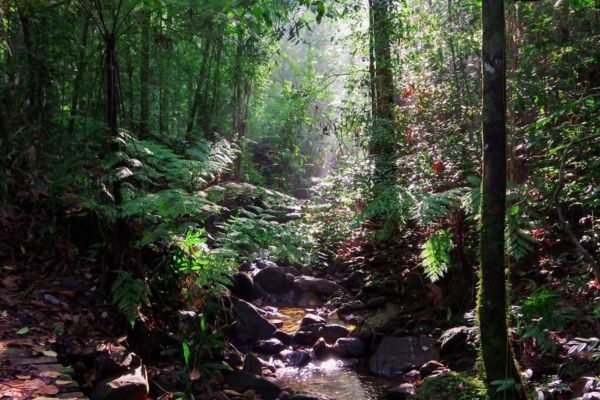
Sinharaja Forest Reserve
Size and Location:
-
- Covering an area of approximately 11,187 hectares, Sinharaja Forest Reserve is situated in the Sabaragamuwa and Southern provinces of Sri Lanka.
- It is located within the districts of Ratnapura, Galle, and Matara, and is bordered by rivers on three sides, namely the Koskulana Ganga in the north, the Maha Ganga in the northeast, and the Gin Ganga in the south.
Biodiversity:
-
- Sinharaja Forest Reserve is renowned for its remarkable biodiversity, harboring a high concentration of endemic species found nowhere else on Earth.
- The reserve is home to a diverse array of flora and fauna, including numerous endemic species of birds, mammals, reptiles, amphibians, insects, and plants.
- It is estimated that Sinharaja is home to over 50% of Sri Lanka’s endemic species, making it a critically important area for conservation.
Flora:
-
- Sinharaja Forest Reserve boasts an impressive diversity of plant life, with over 60% of its tree species being endemic to Sri Lanka.
- The forest is characterized by its lush vegetation, dense canopy, and towering trees, including valuable timber species such as satinwood, ebony, and ironwood.
- The reserve is also known for its abundance of medicinal plants, epiphytes, ferns, and mosses, contributing to its status as a biodiversity hotspot.
Fauna:
-
- The diverse habitats of Sinharaja support a rich variety of wildlife, including several endangered and endemic species.
- Mammals found in the reserve include the purple-faced langur, Sri Lankan leopard, Sri Lankan giant squirrel, and endemic species of civets and mongoose.
- Sinharaja is a birdwatcher’s paradise, with over 140 species of birds recorded within the reserve, including many endemic species such as the Sri Lanka blue magpie, green-billed coucal, and red-faced malkoha.
- Reptiles and amphibians are also abundant, with species such as the hump-nosed lizard, green pit viper, and endemic frog species found throughout the forest.
Conservation and Tourism:
-
- Sinharaja Forest Reserve is protected under Sri Lankan law and designated as a Biosphere Reserve and UNESCO World Heritage Site to safeguard its unique biodiversity.
- The reserve attracts eco-tourists, researchers, and nature enthusiasts from around the world who come to explore its pristine wilderness and experience its rich biodiversity.
- Guided nature trails and trekking tours are available for visitors to explore the forest and learn about its ecology, wildlife, and conservation efforts.
- Sustainable tourism practices are promoted within the reserve to minimize environmental impact and preserve its fragile ecosystems for future generations.
These are just a few of the many national parks and reserves that showcase Sri Lanka’s natural beauty and wildlife diversity. Whether you’re seeking thrilling wildlife encounters, serene natural landscapes, or immersive nature experiences, Sri Lanka’s national parks offer something for every traveler to cherish and enjoy.



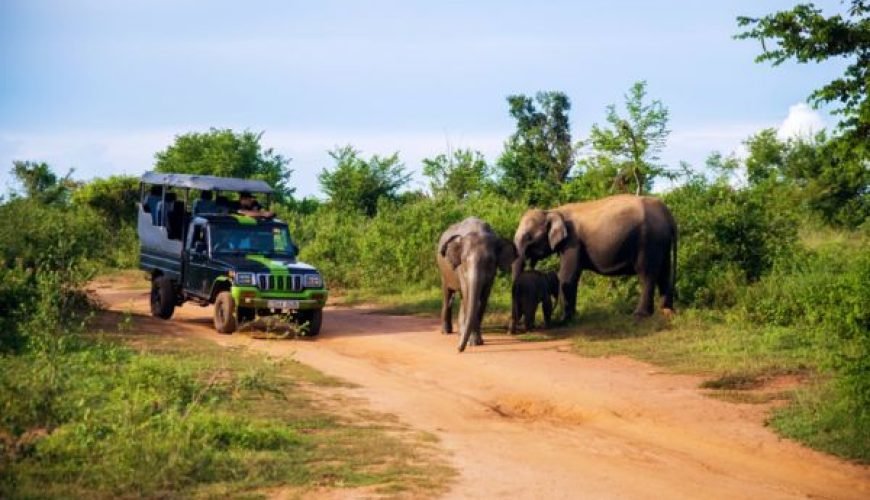

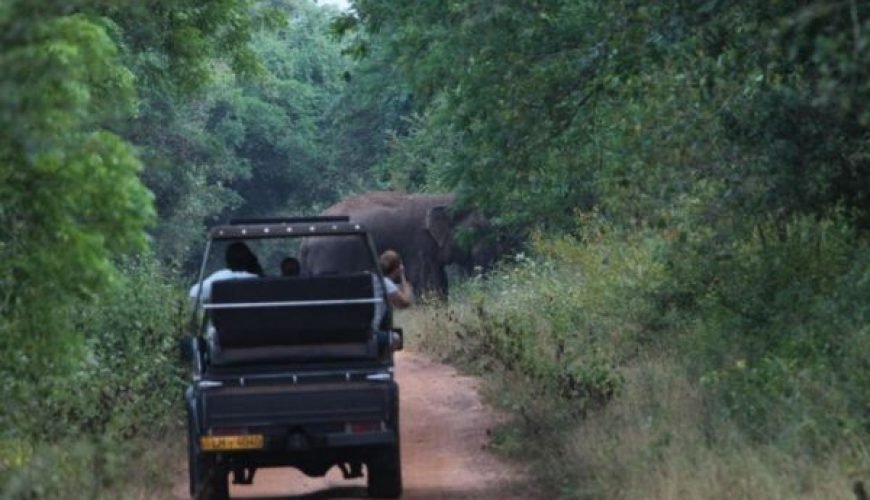


0 Comment